
ST. GEORGE — Toiling alone during lunch, Fred frantically developed indoor plants, ones sitting in slippery sharp pots.
It’s a mnemonic device meant to help English students remember the 15 literary devices – tone, attitude, diction and language among others.
Taken literally, however, it might be an apt description for Dr. Mikel Stevens who has dedicated his life and career to understanding plant genetics and breeding.
Stevens is a Professor Emeritus at Brigham Young University, whose love of studying plants included spending decades working on developing disease-resistant tomatoes.

Now Stevens, along with his colleague Dr. Robert Johnson and a team of graduate and undergraduate students, have recently concluded scientific research on a rare and richly colored hybrid flower that only occurs in Zion National Park, the Grand Staircase-Escalante and a small portion of Arizona.
The Penstemon x jonesii (P. x jonesii) is a darkly-hued flower in the penstemon genus. Its blossoms range in the purple to maroon coloring and the flower, which grows in Zion National Park, has long been thought to be a hybrid of two other penstemon varieties: Penstemon eatonii (P. eatonii), also known as the “firecracker” because of its red blooms, and the Penstemon laevis (P. laevis), a light purple version of the flower that is common in Zion.
As Stevens was nearing retirement, he said he left the world of tomatoes to return to his roots in studying native plants, particularly drought-tolerant plants that people could use in their own gardens.
“I think we need to start being more drought conscious,” Stevens said.
So Stevens turned to penstemon and decided to learn all he could about each of the different breeds.
“They are very interesting,” he said of the wildflower.

While the P. x jonesii has so far only been discovered to occur in a small southwest region of Utah and parts of neighboring Arizona, penstemon varieties grow all over the intermountain west, Stevens said.
His passion and study of penstemon led Stevens to Zion National Park, where a friend from Kanab introduced him to the P. x Jonesii.
Leaning on his plant breeding expertise, Stevens looked at the richly colored wildflower and was doubtful that it could be a first-generation hybrid of P. eatonii and P. Laevis.
“I struggle with it being a direct first-generation hybrid,” Stevens said to his friend. “If you cross those two, you can’t end up with this color. My plant breeding experience says that’s not what I would expect.”
So Stevens began to experiment in his greenhouse. And sure enough, he said, he was 100% correct. When he crossed the two parent flowers, both the color and the size of the blossom did not match that of the P. x Jonesii.
The first generation progeny of the parent flowers yielded a light pink flower, not a dark rose, dark purple or maroon color.
The next question for Stevens then was, what was creating the darker-colored flower?
In order to do research on a molecular level, Stevens said they needed funding. So Zion National Park Vegetation Program Manager Laura Schrage helped to connect Stevens with the Zion National Park Forever Project, the park’s nonprofit partner.
“We are always interested in researchers doing work in the park,” Schrage said, adding that as soon as the Zion Forever Project began putting out their Field Guide – the nonprofit’s guide to park projects in need of funding – she knew that Stevens’ and the BYU team’s research would be a perfect fit for fundraising efforts.
The project was listed in the 2019 Field Guide titled “Discovering a New Species,” and the money allowed the team to purchase the proper tools and equipment to carry out their research.
In a post written for the Zion Forever Project, it said that it had been assumed since the 1960s “that the blooms being seen in the canyon were in fact a hybrid, but without definitive scientific research it was not possible to rule out naturally occurring mutations.”
The Forever Project story continued:
Hybridization would mean cross-pollination was occurring between P. eatonii and P. laevis. Cross-pollinating in nature is no easy task. In order to be successful, the pollen granules of one flower must be an exact molecular match to the other plants stigma. If there is not a match, the pollen granule is rejected. It is either blown away or simply not successful in reaching the ovary.
The scientific team hypothesized that it could be a naturally occurring hybrid that happened when the progeny of the parent flowers were cross-pollinated back to their parents and sometimes with each other.
“When we started doing those (crosses) then we started to see the typical jonesii look,” Stevens said.

The team also confirmed that “P. eatonii and P. laevis share an exact match between their pollen granules and pollen receptors, meaning cross-pollination can flow both ways,” The Zion Forever post said.
Though Stevens was adamant that taking these flowers from the park could have far-reaching consequences to the ecosystem, the results of the research have shown that this could be replicated in a garden.
Stevens said it is legal to own both P. laevis and P. eatonii and it if a person wanted to recreate the colors of the P. Jonesii it wouldn’t be that difficult to do.
As far as the flowers in the park go, Schrage said that they are not under any threat at the moment, but the research is important to help park staff be better managers and stewards of the park’s ecosystem.
Zion Forever Project’s executive director Lyman Hafen echoed Schrage’s sentiments about the importance of the research.
“The funding provided by the Zion Forever Project continues to fuel future research into the most important aspects of the park ecosystem. With this new discovery, Dr. Stevens and the BYU researchers have opened the door to new insights. Their work leaves a lasting legacy for the park but also shows the impact of our fundraising efforts. This work is only possible with the combined efforts of our supporters and communities” Hafen said.
With his research concluded, Stevens said questions still remain about what is aiding in the cross-pollination and what pollinators are attracted to the dark colors of the P. x Jonesii.
The best guess at the moment, Stevens said, is the hummingbird. Stevens said hummingbirds are much more experimental pollinators than say bees who tend to be more particular about what flowers they pollinate.
For Stevens, the research has been really fun and fascinating to find this hybrid that is occurring naturally, he said.
A full copy of the study can be found here.
Stevens, along with Stephen L. Love and Tony McCammon, are publishing a book of penstemon varieties found in and nearby Utah.
The book is titled “The Heart of Penstemon Country: A Natural History of Penstemons in the Utah Region” and it will be available on Amazon in August.
Click on photo to enlarge it, then use your left-right arrow keys to cycle through the gallery.
The cover of Stevens' book "The Heart of Penstemon Country: A Natural History of Penstemons in the Utah Region" available soon on Amazon, location and date not specified | Image courtesy of Mikel Stevens, St. George News Close-up photograph of P. × jonesii blossoms. This photo was taken of a plant in Zion National Park, Utah, date not specified | Photo courtesy of Mikel Stevens, St. George News Photograph of a flower spike of the interspecific backcross P. eatonii × (P. eatonii × P. laevis). This blossom type is a very typical P. × jonesii morphotype and color. This plant was also the results of greenhouse studies, location and date not specified | Photo courtesy of Mikel Stevens, St. George News Photographic examples of flower spikes of the interspecific backcrosses (P. eatonii × P. laevis) × P. laevis (left side) and (P. eatonii × P. laevis) × P. eatonii (right side). These plants were also the results of greenhouse studies, location and date not specified | Photo courtesy of Mikel Stevens, St. George News A close-up photo of a P. laevis X P. Eatonii plants, location and date not specified | Photo courtesy of Mikel Stevens, St. George News A photo of all the different colors scientists found in the greenhouse crosses of penstemon varieties, location and date not specified | Photo courtesy of Mikel Stevens, St. George News Close up photograph of flowers of the F1 interspecific hybrid Penstemon laevis × P. eatonii. This means it is the first generation direct progeny of a cross between the listed parents, location and date not specified | Photo courtesy of Mikel Stevens, St. George News Photographic example of a in situ Penstemon × jonesii found in Zion National Park, Utah, date not specified | Photo courtesy of Mikel Stevens, St. George News Photograph of example of a in situ Penstemon × jonesii found in Zion National Park, Utah, date not specified | Photo courtesy of Mikel Stevens, St. George News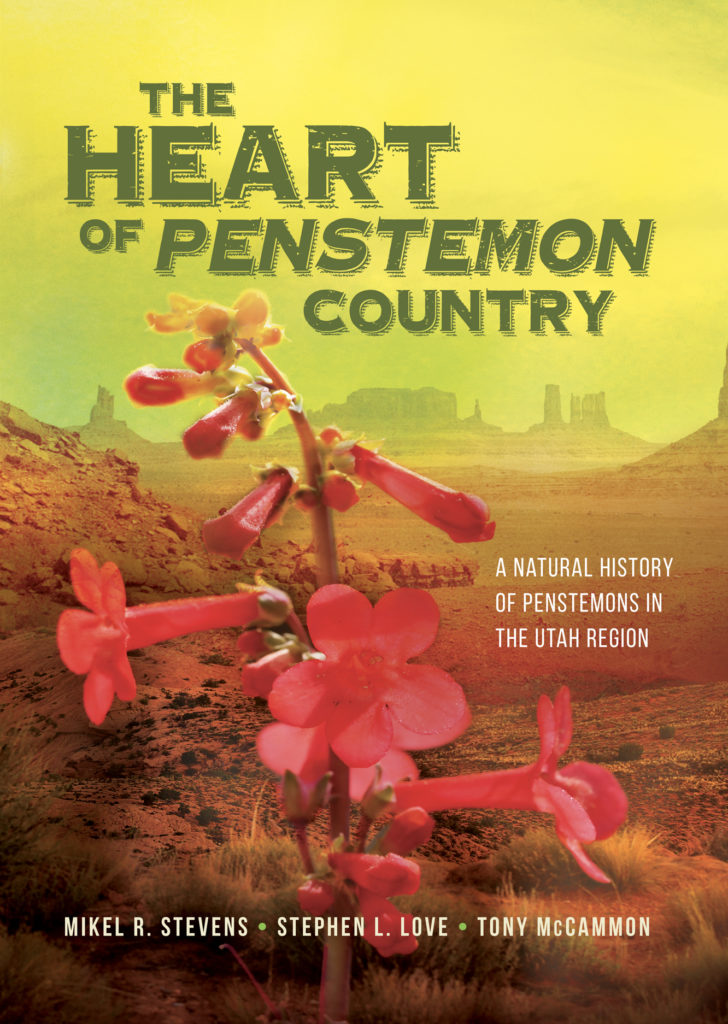
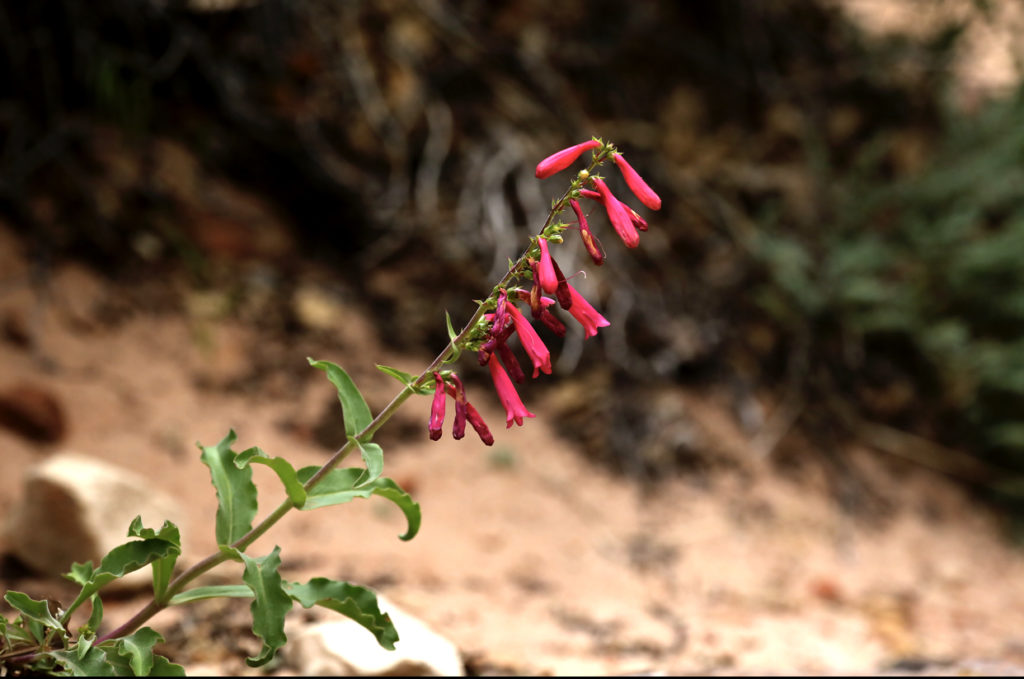



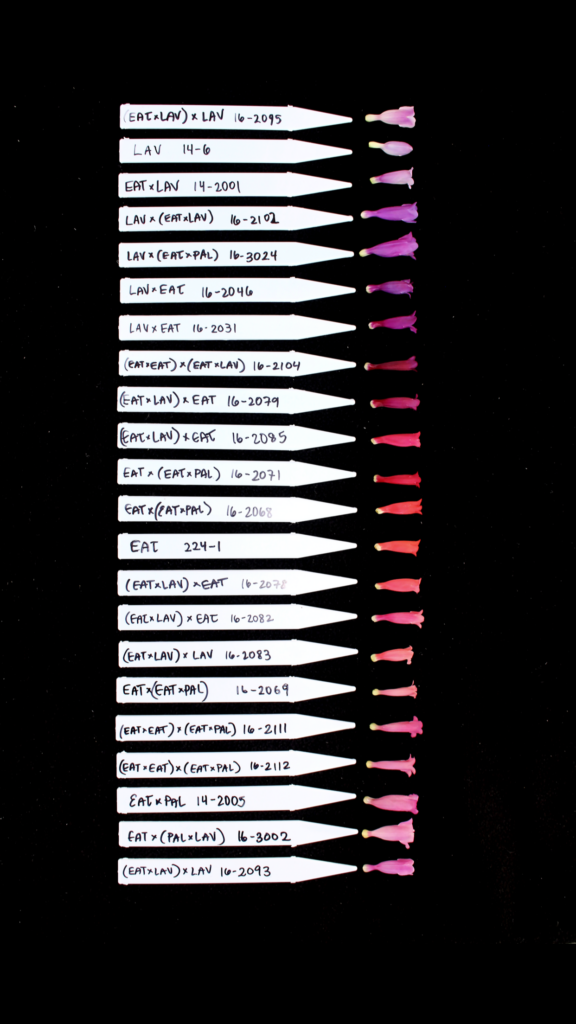
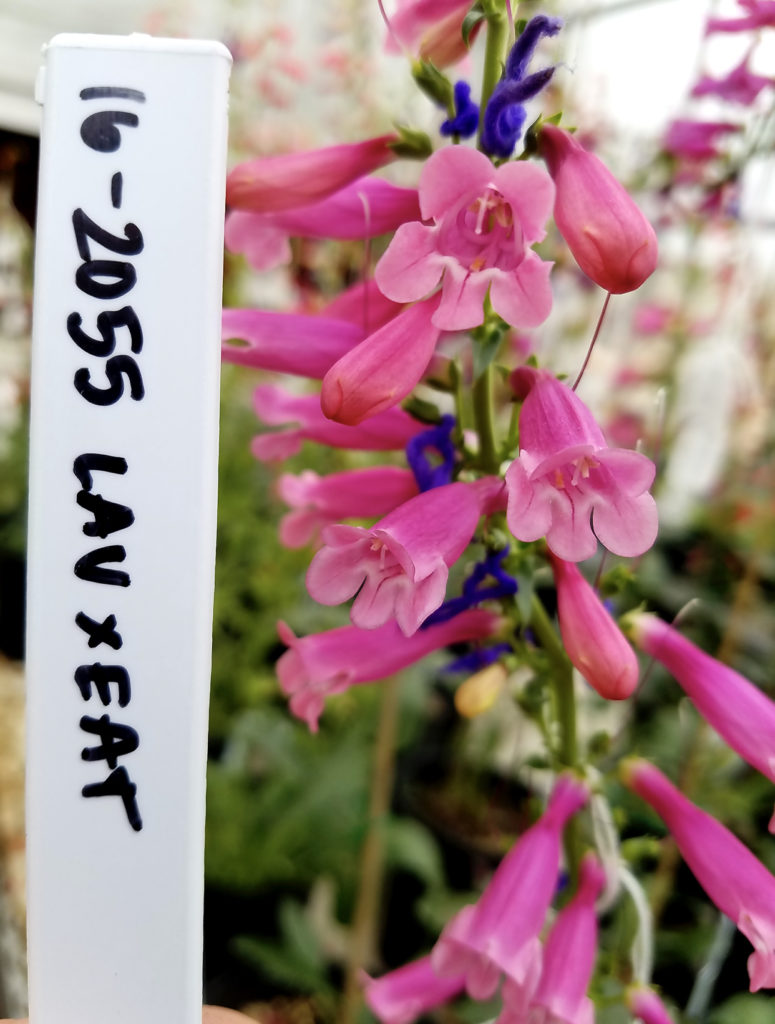
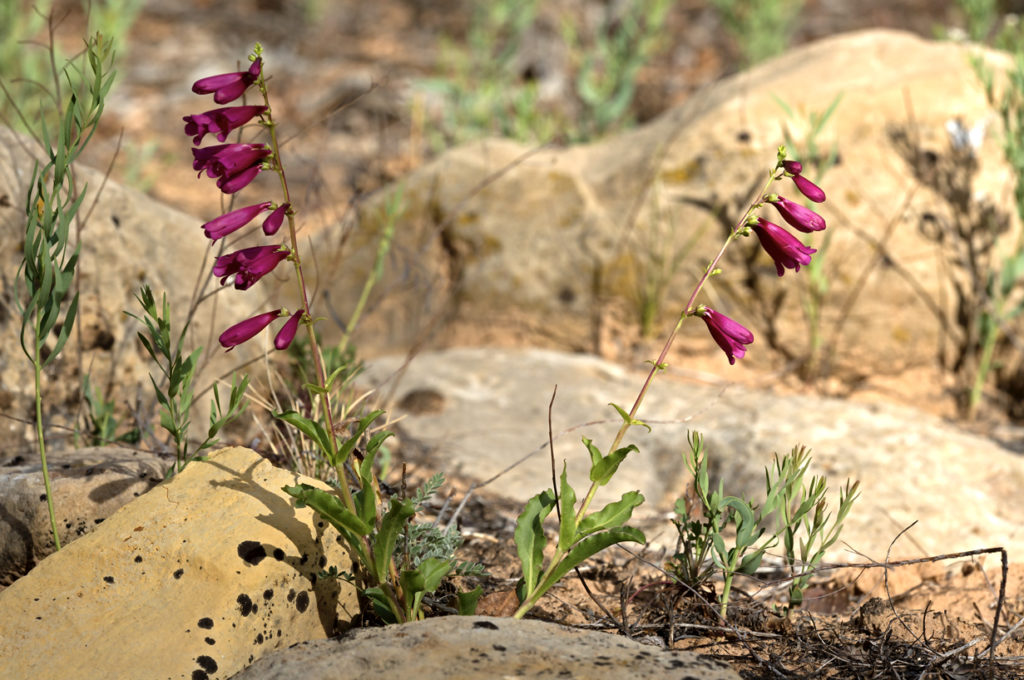
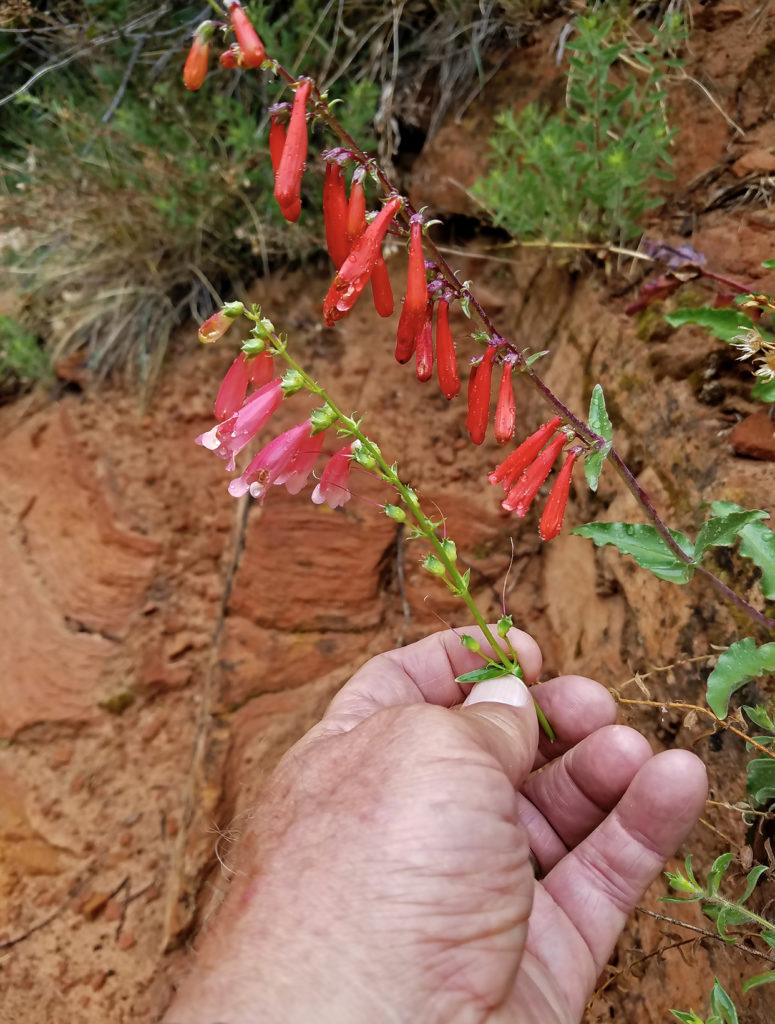
Copyright St. George News, SaintGeorgeUtah.com LLC, 2020, all rights reserved.

